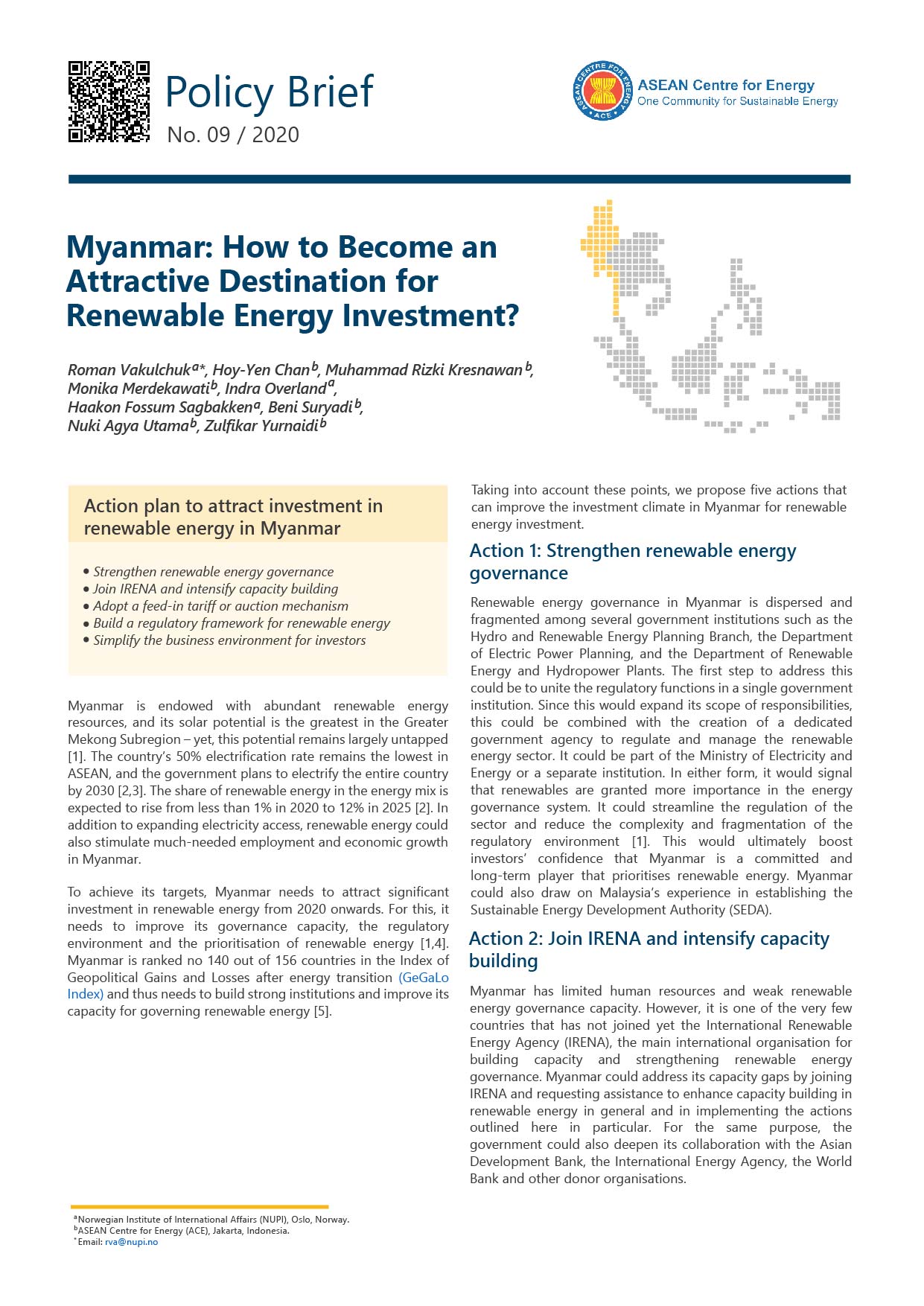
Category
Tag
Author
Roman Vakulchuk, Hoy-Yen Chan, Muhammad Rizki Kresnawan, Monika Merdekawati, Indra Overland ,
Haakon Fossum Sagbakken, Beni Suryadi, Nuki Agya Utama, Zulfikar Yurnaidi
Myanmar is endowed with abundant renewable energy resources, and its solar potential is the greatest in the Greater Mekong Subregion – yet, this potential remains largely untapped. Renewable energy governance in Myanmar is dispersed and fragmented among several government institutions such as the Hydro and Renewable Energy Planning Branch, the Department of Electric Power Planning, and the Department of Renewable Energy and Hydropower Plants. The country’s 50% electrification rate remains the lowest in ASEAN, and the government plans to electrify the entire country by 2030 . The share of renewable energy in the energy mix is expected to rise from less than 1% in 2020 to 12% in 2025. In addition to expanding electricity access, renewable energy could also stimulate much-needed employment and economic growth in Myanmar.
To achieve its targets, Myanmar needs to attract significant investment in renewable energy from 2020 onwards. For this, it needs to improve its governance capacity, the regulatory environment and the prioritisation of renewable energy. Myanmar is ranked no 140 out of 156 countries in the Index of Geopolitical Gains and Losses after energy transition (GeGaLo Index) and thus needs to build strong institutions and improve its capacity for governing renewable energy.
Taking into account these points, we propose five actions that can improve the investment climate in Myanmar for renewable energy investment.
Action plan to attract investment in renewable energy in Myanmar